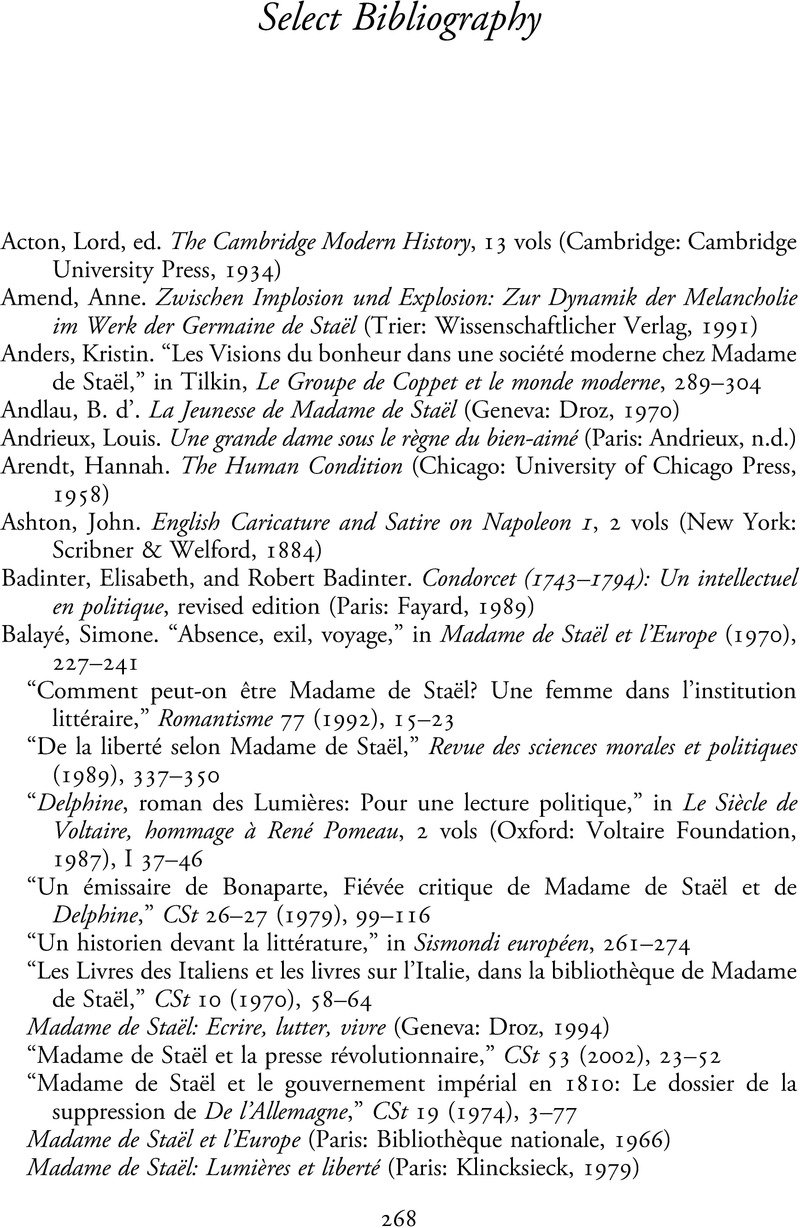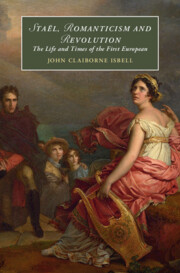Book contents
- Staël, Romanticism and Revolution
- Cambridge Studies in Romanticism
- Staël, Romanticism and Revolution
- Copyright page
- Epigraph
- Contents
- Preface
- Acknowledgments
- Abbreviations
- Introduction
- Chapter 1 The Painful Birth of the Romantic Heroine
- Chapter 2 Revolution and the Private Sphere
- Chapter 3 Madame de Staël, Minister for War?
- Chapter 4 The Social Contract for Staël and Constant, or Does Liberty Have a Sex?
- Chapter 5 When the Light of Reason Fails
- Chapter 6 Imaginary Europe
- Chapter 7 Suicide, Meaning, and Power in the Querelle of Delphine
- Chapter 8 My Father, Myself
- Chapter 9 Italy, or Corinne
- Chapter 10 Interlude
- Chapter 11 Napoleon Pulps His Enemies
- Chapter 12 The Napoleon Apocalypse
- Chapter 13 Romantic Spain and National Resistance
- Chapter 14 A. W. Schlegel, Staël, and Sismondi in 1814
- Chapter 15 The Italian Romantics and Madame de Staël
- Chapter 16 Inventing the French Revolution
- Chapter 17 Voices Lost?
- Conclusion
- Notes
- Select Bibliography
- Index
- Cambridge Studies in Romanticism
- References
Select Bibliography
Published online by Cambridge University Press: 03 August 2023
- Staël, Romanticism and Revolution
- Cambridge Studies in Romanticism
- Staël, Romanticism and Revolution
- Copyright page
- Epigraph
- Contents
- Preface
- Acknowledgments
- Abbreviations
- Introduction
- Chapter 1 The Painful Birth of the Romantic Heroine
- Chapter 2 Revolution and the Private Sphere
- Chapter 3 Madame de Staël, Minister for War?
- Chapter 4 The Social Contract for Staël and Constant, or Does Liberty Have a Sex?
- Chapter 5 When the Light of Reason Fails
- Chapter 6 Imaginary Europe
- Chapter 7 Suicide, Meaning, and Power in the Querelle of Delphine
- Chapter 8 My Father, Myself
- Chapter 9 Italy, or Corinne
- Chapter 10 Interlude
- Chapter 11 Napoleon Pulps His Enemies
- Chapter 12 The Napoleon Apocalypse
- Chapter 13 Romantic Spain and National Resistance
- Chapter 14 A. W. Schlegel, Staël, and Sismondi in 1814
- Chapter 15 The Italian Romantics and Madame de Staël
- Chapter 16 Inventing the French Revolution
- Chapter 17 Voices Lost?
- Conclusion
- Notes
- Select Bibliography
- Index
- Cambridge Studies in Romanticism
- References
Summary

- Type
- Chapter
- Information
- Staël, Romanticism and RevolutionThe Life and Times of the First European, pp. 268 - 283Publisher: Cambridge University PressPrint publication year: 2023

